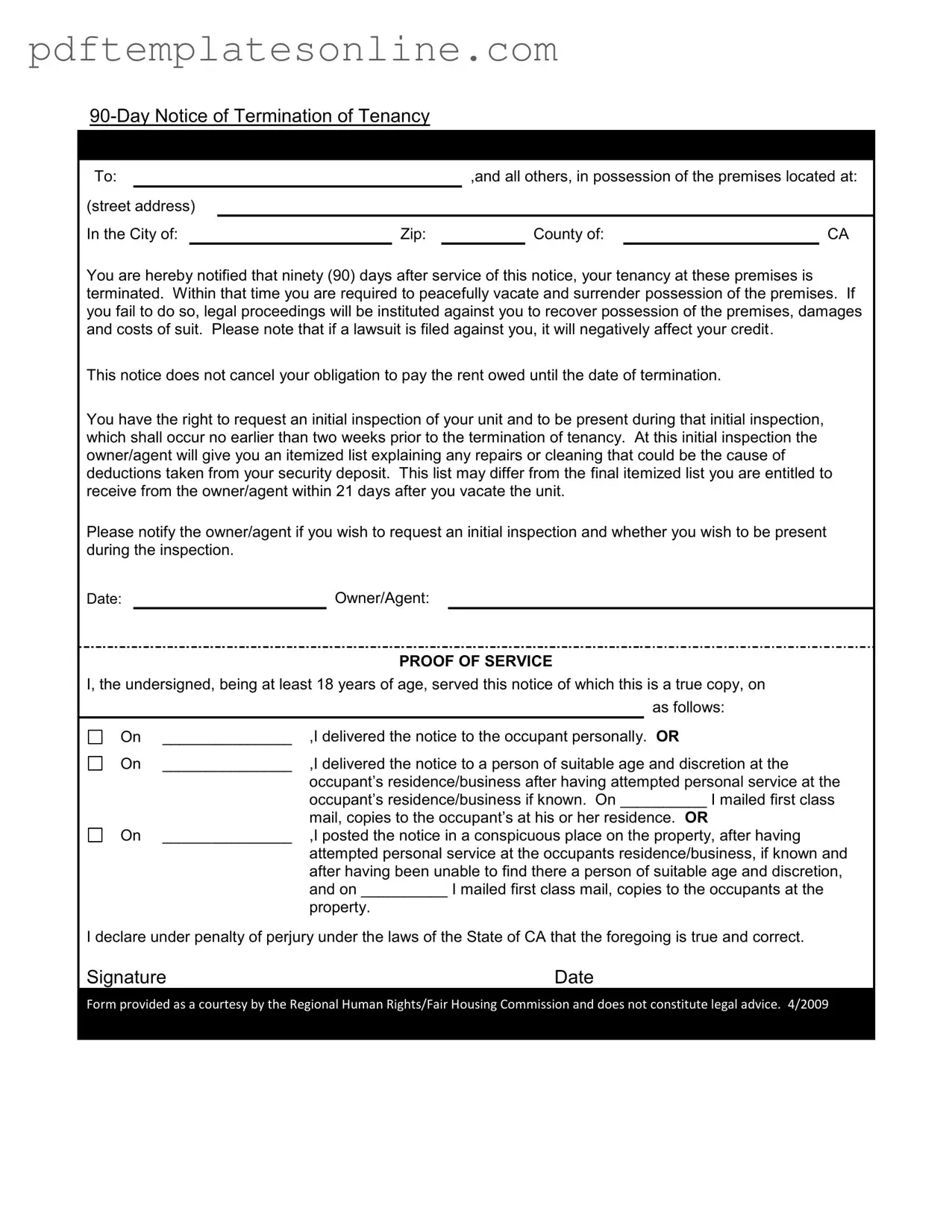Blank 90 Day Notice To Move Out Form
The 90-Day Notice to Move Out form is a legal document used by landlords to inform tenants that their tenancy will be terminated in ninety days. This notice outlines the tenant's responsibilities, including the requirement to vacate the premises and the potential consequences of failing to do so. Understanding this form is crucial for tenants to ensure compliance and protect their rights during the moving process.
Access 90 Day Notice To Move Out Editor Now
